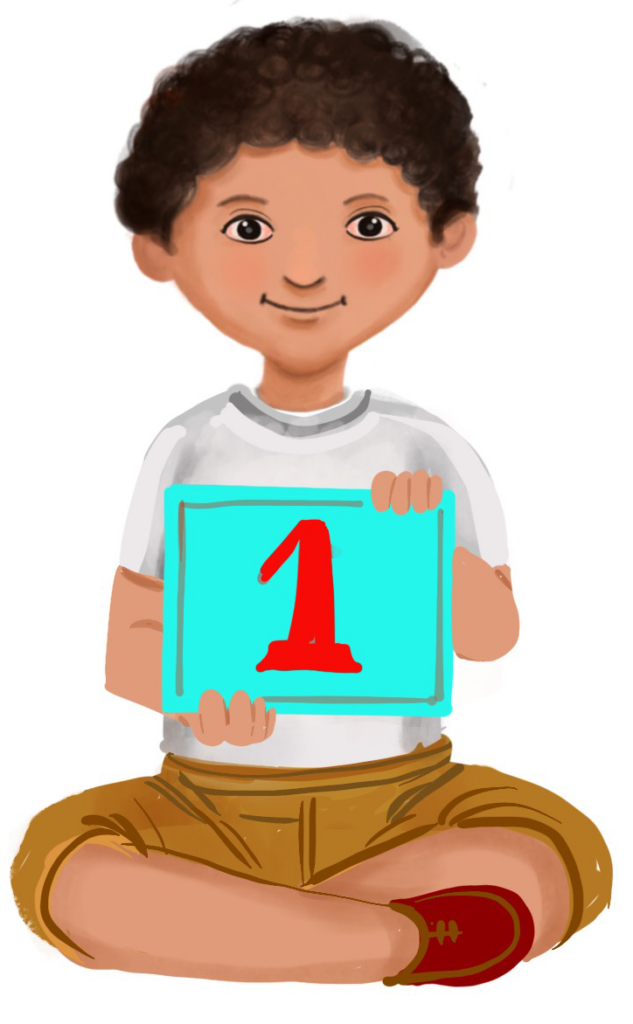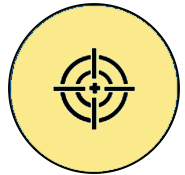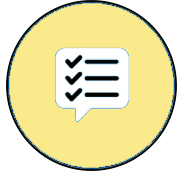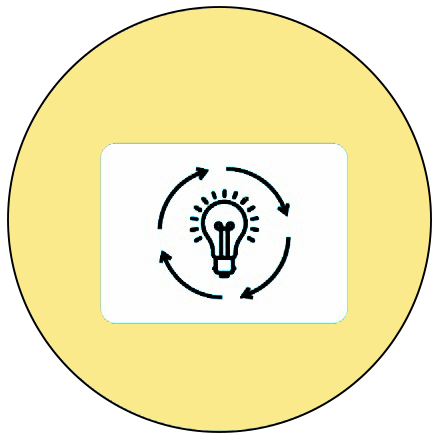
Numbers 21 to 50
Week 3
Learning Outcome
Identifies, reads, and writes the number that comes before, after and in between a given number/numbers between the numbers 20 and 50.
 Objective
Objective
Students will be able to identify and write numbers after, before, between, and missing numbers from 21 to 50.
 Prerequisites
Prerequisites
● Number recognition and reading (20 to 50)
● Writing numbers 20 to 50
● Concept of tens (Basic understanding that 10 ones make one ten)
● Ability to count sequentially from 1 to 50
 Pre-teach Vocabulary
Pre-teach Vocabulary
Basic vocabulary:
● Understanding terms like “more,” “less,” “before,” “after,” and “between” about numbers.
● Children should be familiar with the terms -add, plus, equal to
Basic understanding:
● Trace: Following a line or pattern to form a number
● Sequence: The correct order of numbers
Introduction
The teacher greets the students and begins with a warm-up activity, counting aloud from 20 to 50 together.
Once students are focused, the teacher introduces the topic by saying, “Today, we are going to learn something new and enjoyable – how to find the numbers that come before, after, and between other numbers.”
Using a number line or visual aid, the teacher points to a few numbers and asks interactive questions:
- What number comes before 35?
- What comes after 40?
- Can you tell me about the number between 28 and 30?
LTM: Printable number line – Coming soon
Video: What comes after?- Coming soon
ISL Video: What comes after? – Coming soon
Video: What comes before? – Coming soon
ISL Video: What comes before? – Coming soon
Video: What comes between? – Coming soon
ISL Video: What comes between? – Coming soon
Activity 1: Number Bingo
Objective:
To practice recognising numbers from 21 to 50, focus on identifying what comes before, after, or between given numbers.
Importance of the activity for children:
Helps in developing:
- Numerical Skills (Number recognition, Sequencing, Place value)
- Cognitive Skills (Memory, Pattern recognition, Problem-solving)
- Fine Motor Skills (Holding a pencil and crossing the Bingo card)
- Social skills (Playing together in a group)
- Emotional skills (sense of achievement on completion builds self-esteem)
Resources required:
- Bingo cards with numbers from 20 to 50.
- Markers or chips for covering numbers.
- Call-out sheet with prompts such as
- What number comes before 25?
- What number comes after 37?
- What number comes between 29 and 31?
Setting for the activity:
Classroom desks where children can work individually on the worksheet.
Type of activity: Individual activity
Preparation of activity:
- Prepare Bingo cards with a grid of numbers from 20 to 50 (in random order).
- Create a list of questions related to numbers before, after, and between.
Role of the teacher: Demonstrator and facilitator
Procedure:
- Distribute Cards: Give each child a Bingo card with a random set of numbers from 20 to 50.
- Start Game: The teacher calls out questions such as, “What number comes after 45?” or “What number is between 39 and 41?”
- Marking the Cards: Children mark the correct number on their Bingo cards if it’s present.
- Winning the Game: The first child to get a full row (horizontally, vertically, or diagonally) yells “Bingo!” and wins the round.
Observations:
The teacher observes the listening skills and the quickness of children in identifying the correct numbers.
Conclusion:
Children learn to identify what comes before, after, or between given numbers (from 21 to 50)
LTM: Number Bingo cards – Coming soon
LTM: Call-out questions for the activity – Coming soon
Activity 2: Number Card Sort
Objective:
To practice organizing numbers from 21 to 50 in sequence, focus on identifying what comes before, after, or between given numbers.
Importance of the activity for children:
Helps in developing:
- Numerical Skills (Number recognition, Sequencing, Place value)
- Cognitive Skills (Memory, Pattern recognition, logical thinking)
- Fine Motor Skills (Picking the card, holding the card)
- Gross Motor Skills (Walking towards baskets, dropping the card)
- Social Skills (Working in teams)
- Emotional skills (sense of achievement on completion builds self-esteem)
Resources required:
- Number cards (20 to 50)
- Small baskets or containers
- Timer
Setting for the activity:
The activity can be done indoors or outdoors depending on the space availability.
Type of activity: Group activity
Preparation of activity:
1. Prepare sets of number cards from 21 to 50 (one set per group).
2. Prepare baskets labelled 21 to 30, “31-40,” and “41-50.”
Role of the teacher: Demonstrator and facilitator
Procedure:
Step 1: Forming the Number with Beads
- Divide the class into small groups.
- Give each group a set of shuffled number cards and three labelled baskets.
- Explain the rules.
- Sort the cards into the correct basket by range
- Once sorted, arrange the cards in each basket in ascending order.
- Work together as a team to complete the task quickly.
- Set a time limit and start the activity.
- Once time is up or all groups finish, review the sorted cards and ask questions like
- What number comes before/after this one?
- What number is between these two?
- If I remove this card, what number is missing?
Observation:
The teacher observes the children engaged in the activity and observes the listening and comprehension abilities of the children and identifies the children in need of help.
Conclusion:
Children learn the numbers that come before, after, and in between numbers in the sequence from 21 through 50.
Video: Number card sort – Coming soon
ISL Video: Number card sort – Coming soon
Flashcards: Number cards sort 21 to 50 – Coming soon
Home Activity
Objective: To reinforce the concept of ‘number after and number before’ through a fun online activity.
Home Activity: Click on the right number – Word Wall – Coming soon
Cross-Curricular Connection:
- Language class:
Use words such as ‘after,’ ‘before,’ and ‘between’ in conversations - Art Class:
Children draw a caterpillar or a train with compartments and later use their artwork in math class to write numbers and circle the number before or the number between.
Assessment:
The teacher can give the practice worksheet to the children, which can be followed by an assessment worksheet.
Worksheet: Practice Worksheet – Numbers 21 to 50 – Coming soon
Worksheet: Practice Worksheet – Numbers 21 to 50 (Enlarged) – Coming soon
Worksheet: Assessment Worksheet – Numbers 21 to 50 – Coming soon
Worksheet: Assessment Worksheet – Numbers 21 to 50 (Enlarged) – Coming soon
Check list for teacher:
| Activity | Yes | No | Sometimes |
| Children can: | |||
| Read and tell numbers in a sequence from 21 to 20 | |||
| Learn the numbers that come before, after, and in between numbers in the sequence from 21 through 50 | |||
| Form numbers from 21 to 50 using the concepts of tens and ones | |||
| Focus on the activity | |||
| Complete the activity in the given time | |||
| Do the activity independently | |||
| Express verbally and through actions, expressions, or gestures |
Adaptations for addressing learner variability: Adaptations and strategies – Coming soon
Teacher Resource Document – Coming soon
| Source and Attribution of images: All images used in the above Assets and Aids are originally created. |
| This digital material has been developed by the Sri Sathya Sai Vidya Vahini Inclusive Education Project, a unit of Sri Sathya Sai Central Trust, Prasanthi Nilayam, as a collaborative offering in the service of our nation. |